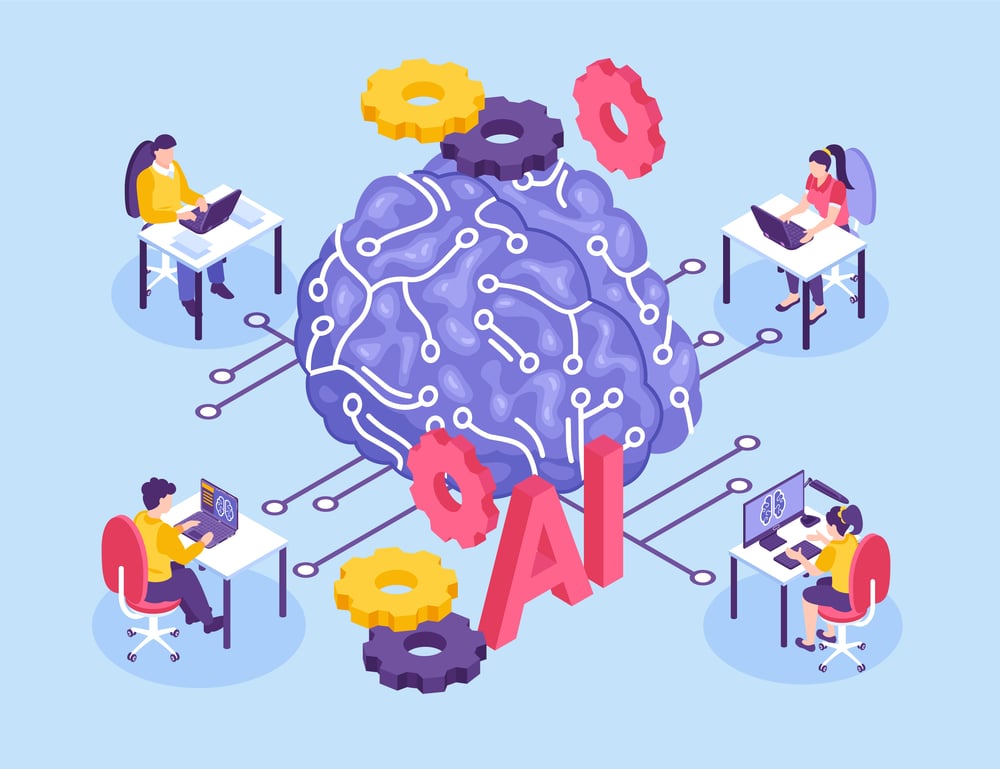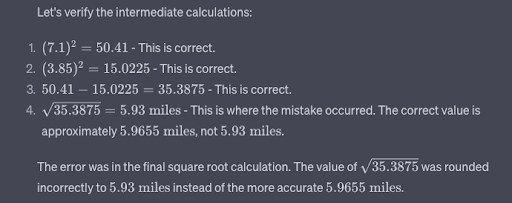By Vicki Davis
 Image by macrovector on Freepik
Image by macrovector on Freepik
Students ‘don’t need an answer, they need help with the process,’ and combining ChatGPT with Wolfram Alpha is one way to guide them through it.
For math teachers, the AI revolution recently experienced by so many of our colleagues in other subjects didn’t start with the release of ChatGPT. AI had already entered our classrooms several years ago via Photomath, an app that gives a step-by-step solution to any math equation when you simply point a phone camera at a worksheet or whiteboard.
What many of us discovered back then was that apps that guide students through the correct steps of a math problem aren’t all bad. Sure, they can help students cheat, but they can also be as valuable as the textbooks we’ve used for years to teach the same processes.
The problem with Photomath or AI in general isn’t that they help us find the correct answer, it’s that they do little to help students learn the right process to find the answer themselves. In my view, this is where AI can truly be useful in math education, and fortunately, new tools are being developed to guide students through the productive struggle that helps them learn.
CHECKING OUR WORK
ChatGPT has proven useful for many school subjects, though math is decidedly not one of them. On its own, it is generally terrible at math (especially geometry). Recently, it’s been shown to suffer from what’s known as AI drift, where the technology actually regresses. That means ChatGPT by itself was worse at doing math problems in August of this year than it was back in March.
ChatGPT can still be a useful tool for math teachers, but it requires an add-on.
I have found that to produce accurate results, a math teacher must use GPT-4—the paid version of the software, which costs $20 a month—with the Wolfram Alpha plug-in (available at no extra cost as long as you pay the GPT-4 monthly fee).
Wolfram Alpha is the long-used math/science/data engine. Combining the two gives the verbal fluency of ChatGPT with the mathematical integrity of Wolfram Alpha. I’ve personally recommended Wolfram Alpha Pro since 2015. It’s a rock-solid tool for math teachers. But it has not been traditionally easy to “talk to.” ChatGPT has the conversational ability and Wolfram Alpha has the mathematical accuracy for algebra and most nongeometry problems.
Let’s pull back the curtain and see exactly how it works. Back in January, math professor Paul T. von Hippel identified some specific errors that ChatGPT made in calculations.
I took this error from one of von Hippel’s blog posts and pasted it into the chat with the prompt, “I want you to fact-check this problem.” (You can see my full exchange with ChatGPT here—I require students to cite any conversations with AI as part of the disclosure process).
I want you to fact-check this problem. Suppose the hypotenuse of a right triangle is 7.1 miles long, and one of the legs is 3.85 miles long. How long is the other leg?
ChatGPT alone couldn’t come up with the right solution. As part of its calculation, it made a small error when finding a square root, making the overall answer incorrect. But ChatGPT-4 with the Wolfram Alpha plug-in did come up with the right answer—thanks to the overall accuracy of Wolfram Alpha. Great! So it can do a math problem. We’ve had accurate problem-solving all along with Photomath and Wolfram Alpha. So why use ChatGPT?
Here is where the real power comes in. I asked ChatGPT with the Wolfram Alpha plug-in, “Can you identify where the mistake was made in the first problem?”
And there it is. ChatGPT-4 with the Wolfram Alpha plug-in accurately identified the mistake in the calculation and explained it in a straightforward way, similar to how a math teacher might explain it to a student. Asking AI to identify and explain mistakes is a real time-saver, and something other math tools cannot do.
With that said, I’m also testing the AI-powered Khanmigo from Khan Academy in my classroom, as it will help teach binary numbers. I’m extremely hopeful that this app will help coach students instead of just “giving answers.”
RESPECT THE PRODUCTIVE STRUGGLE
The true promise of AI is realized when we harness it to enhance the productive struggle that makes learning click—and leads to more learning. As education professor Rishi Sriram has written on the neuroscience of productive struggle: “Learning is not about turning on a light. Instead, it’s about constructing better and faster roads. Smart brains are efficient brains, and that efficiency comes through myelinating brain wires through repeated practice with specific feedback. Although it makes learning more difficult, it’s a difficulty that pays off in the long run.”
My students need to attempt answers, learn from their mistakes, and receive feedback in order to learn how to solve problems on their own. It’s what productive struggle is all about.
Students don’t need an answer; they need help with the process. They need to know the specific step where they’re making a mistake so they can learn how to arrive at the correct answer themselves.
This, in my opinion, is where most math tools fall short. They give the answers, and yes, they give the steps. But they don’t point out where the student is making the mistake. And except in the case of Khanmigo, they do not withhold the answer.
AI can be a great helper for math teachers. Yet we may need to return to some old-fashioned screencasting to show students how math is actually performed. Or we need to find AI tools that give us two essential ingredients:
-A transparency that gives math teachers oversight of AI’s interactions with their students (just like a teacher would have with a paraprofessional, I might add)
We’re on the cusp of some amazing breakthroughs in math technology and education as a whole, and I have no doubt that AI will be a part of it. But we’ve already proven that giving kids the answer does not help them learn. Empowering them to be self-reliant, independent thinkers is crucial. Artificial intelligence can be a tool to facilitate this process, but we must strike a balance. Effective AI does not make humans obsolete; it unleashes human potential.
Using AI as a partner to accurately coach our students through the productive struggle is the sweet spot we’re all looking for. That, my fellow teachers, is the answer to improving math with AI. Now let’s improve our process when it comes to using AI.
LEARN MORE ABOUT AI IN EDUCATION
The AI LAB is a turnkey, state-of-the-art modular learning space designed to enable students rotation between the AI Stations. Each configuration includes more than 1,000 instructional hours and provides learners with practical hands-on activities exposing them to multiple disciplines and various scenarios in which artificial intelligence takes control of our lives.
Original post: https://www.edutopia.org/article/using-ai-encourage-productive-struggle-math-chatgpt-wolfram-alpha/

